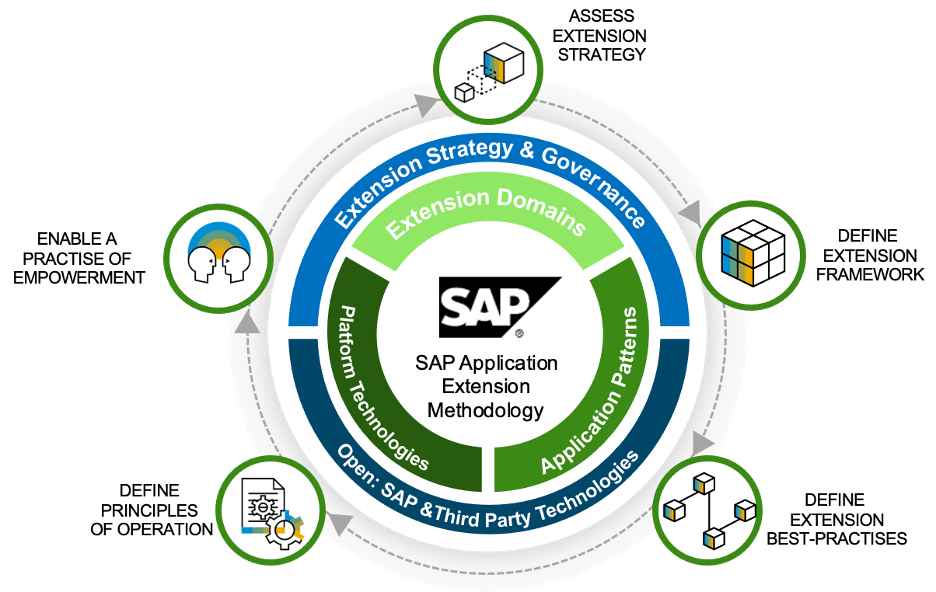 Anthony Cecchini is the President and CTO of Information Technology Partners (ITP), an ERP technology consulting company headquartered now in Virginia, with offices in Herndon. ITP offers comprehensive planning, resource allocation, implementation, upgrade, and training assistance to companies. Anthony has over 20 years of experience in SAP business process analysis and SAP systems integration. ITP is a Silver Partner with SAP, as well as an Appian, Pegasystems, and UIPath Low-code and RPA Value Added Service Partner. You can reach him at [email protected].
Anthony Cecchini is the President and CTO of Information Technology Partners (ITP), an ERP technology consulting company headquartered now in Virginia, with offices in Herndon. ITP offers comprehensive planning, resource allocation, implementation, upgrade, and training assistance to companies. Anthony has over 20 years of experience in SAP business process analysis and SAP systems integration. ITP is a Silver Partner with SAP, as well as an Appian, Pegasystems, and UIPath Low-code and RPA Value Added Service Partner. You can reach him at [email protected].
You might have already heard of the SAP Extension Suite that powers the BTP (Business Technology Platform), if not, check out our blog SAP Extension Suite – An Overview. The Suite offers solutions that allow you to get new applications to extend your standard SAP solution. In so doing, you can enhance the productivity and engagement of your employees while jump-starting developments. With the many technology alternatives currently available, identifying an optimal path for building extensions to SAP business solutions is not always easy. You can settle for the CAP (Cloud Application Programming) model, the RAP (RESTful Programming Model), or a freestyle microservice. However, these are not the best options for specific scenarios.
Furthermore, most organizations now have several development teams, each using its technology based on its available skill sets. This introduces multiple technologies and random solution architecture ‘’chaos’’. While one group might be proficient in using RAP for development, another might want to go freestyle. Lastly, your solution architect might have experience with one development approach or prefer one over another.
To solve these issues, SAP introduced a standardized methodology that helps users derive solution architecture from their business requirements. This is SAP Application Extension Methodology. It allows one to generate a client-specific organizational framework that will guide solution architects in defining the best technology for an extension. Read on to understand what SAP Extension Methodology entails

Extensibility is crucial for all companies intent on continuous and rapid innovation. SAP Extension Methodology is a solution that complements the technology portfolio from SAP by helping solution architects shape their ideal extension strategy. With it, technical and enterprise architects can generate a customized organizational framework that will guide them in defining the best technologies for an extension.
SAP Extension Methodology essentially simplifies extensions by:
- Helping architects shape their extension strategies.
- Collecting all typical extension patterns and styles.
- Becoming a roadmap to extension services based on a customer’s needs.
- Being an architecture blueprint for non-SAP and SAP integration technologies.
When putting together your ideal extension strategy using SAP Extension Methodology, you will use several tools and go through different phases. But before delving into the phases involved in the SAP Extension Methodology cycle, here is a definition of the key terms in the process:
Extension Domain
This describes the relationship between an extension and its core solution, including their levels of dependency. Extensions belong to extension domains like In-App, Cross-Domain, and Side-By-Side. An Extension Domain is your entry point into SAP Extension Methodology and can be your ‘’big picture’’ in extension. You can select the relevant extension domains for your company by assessing your extension architecture and then listing your current technologies and what you want to achieve. An Extension Domain is technology agnostic, so it can be a blueprint for a hybrid extension platform comprising multiple extension technologies and services.
Application Patterns
This comprises several Platform Technologies. An application pattern can also be called architecture, denoting different levels of the application. If integration is part of the pattern, this can become a way of mapping possible integration options according to ISA-M (Integration solution Advisory Methodology). You can implement one programming model on different Extension Domains using application patterns. Some examples of application patterns include Native Mobile App and Key-User Extensibility S/4HANA.
Operation Concept
When implementing Application Patterns, each extension on it will have specific requirements for its operation. For instance, used technologies and services should have ownership within the organization using them.
Platform Technology
The main objective of SAP Extension Methodology is to identify platform technologies that will be used to implement extensions. Different systems, platforms, or solutions will have different technologies and frameworks for implementing extensions. These diverse technical capabilities are known as platform technologies like SAP Work Zone.
Key Criteria
When you have a set of requirements, you need to identify an appropriate platform technology for them. To do this, you will characterize each achieved platform technology using key criteria. The criteria denote technology properties that can be mapped to requirements and assessed using questionnaires later.
Decision Matrix
You use a Decision Matrix to map the requirements to platform technologies and key criteria easily. The matrix can be customer-specific findings like non-SAP technologies, or the best practices SAP has summarized.
Extension Task
This is what you should do to implement the requirement of your extensions.
With the above definitions in mind, here is a diagram to ease your understanding of the cycle of SAP Extension Methodology in creating a perfect extension strategy for your company.
You need to define and finalize the corporate extension guidelines and directory of core solutions before you can use the SAP Extension Methodology framework. This is what makes up the methodology and already has a lot of content, so defining and finalizing will be quick. Though most clients already have the guidelines, it is prudent to check your Extension Methodology to see if you can incorporate new ideas into them.
Generally, there are five phases for adopting the methodology.
Assess Your Strategy
In this phase, you will review or document your existing extension architecture. Scope the focus areas to employ a use-case-driven approach (this is technology-agnostic) to know the strengths and drawbacks of your extension architecture.
Design an Extension Framework
When you know what your extension architecture entails, you can then map your key criteria to application patterns. At this point, you can also derive the extension guidelines that will work best for your organization according to what reflects your customer needs.
Define the Best Practices for Extension
Here, you will define the blueprints for your solution architecture, adding the key characteristics and decision criteria that work best for you. At this point, you will have established extensibility as a recognized discipline.
Enable an Empowerment Practice
To enable empowerment, you will democratize extension delivery while defining the areas for a self-service extension. This establishes a shared developer community.
Define Your Principles of Operation
At this phase, you derive the operation concepts of your SAP and non-SAP solutions. This entails defining ownership and the support process of your extension. In so doing, you will define the educational recommendations that will support your ideal extension strategy.
After defining your framework, the SAP extension Methodology will give you a way of using deliverables to evaluate specific use cases so that you make an informed choice on a suitable application pattern to implement. The activities in your methodology are structured in chapters from which you can pick and choose what extension approach best applies to your client.
In practice, you can define your framework by filling out a PPT template and answering questions that will assess your prevailing situation. Modifying and filling this template significantly eases your work. Even so, the template is only a small part of the SAP Extension Methodology. You can opt for a spreadsheet-based questionnaire for the initial assessment of your business requirements. The answers gleaned will guide you to reproduce a quality solution architecture that guides your development teams.
Among the pillars of Extension Methodology are extension capabilities. The term ‘’extension capabilities” denotes a focus on extension towards your core solutions, including process, business logic, data model extension, user interface, and business object. Below are tidbits on these solutions:
UI Extension
The central access point for your business solutions is the user interface (UI).UI extensibility focuses on surfacing the field definitions in UIs. Your UI screens should fit the specific needs of an end user, including an option for building custom UIs on your existing backend functionality. If your current user interface mainly fits the use case, get upgrade stable extension mechanisms so that you negate additional maintenance.
Process Extension
Process extensibility centers on extensions at a coarse-grained level. You will not extend a business process step but rather an entire business process by adding, exchanging, or rewiring a few steps. Process extension entails providing consumable events for innovative business processes.
Business Object Extension
Customized business objects will prove more challenging to adapt compared to UI, business logic, and data models, more so when implemented in a side-by-side approach. You will need a combination of extra data models, business logic, and APIs for custom business object extension.
Business Logic Extension
This entails extensibility within the steps of a business process. Based on your business requirements, the business logic can be executed synchronously or asynchronously to influence your standard application’s flow and transform your enterprise into an intelligent one.
Data Model Extension
A data model represents similar or related business entities. Existing data models are often insufficient to cover individual business needs. As such, you need a consistent extension of the connected data models of the products in your landscape. In almost all implementation projects, data models are extended by nodes and fields.
Summary
SAP has come up with several solutions for the technical issues you might face in your business. SAP Extension Methodology delivers a framework for your solution architects to follow when choosing the best technologies for extending your software. This negates the confusion occasioned by each architect taking a different approach to building extensions. Essentially, the SAP Extension Methodology will give you standardized answers on what skills you need for a proposed solution architecture, which is the proven solution architecture for your business needs, and what technologies your company needs.
You can learn more about the SAP Application Extension Methodology on the SAP Help Portal. Here you can download all templates and the SAP Application Extension Methodology Extension Technology Mapping.




